Oil on panel. Holy Family with Saint Anne and Saint John the Baptist. 16th century
Oil on panel. Holy Family with Saint Anne and Saint John the Baptist. 16th century
Author: Late Mannerist painter, school of Giulio Romano
Period: 16th century
The painting we present represents a valuable homage, identical in support and pictorial technique, to the famous “Madonna della gatta” by Giulio Romano, a work datable between 1521-1524 and preserved at the National Museum of Capodimonte in Naples.
Our work is in fact a valuable workshop replica of the aforementioned painting, attributable to a late-Mannerist painter, belonging, precisely, to the atelier of Giulio Romano.
The pyramidal scheme of the hagiographic composition is a direct reference to the lesson of Leonardo and Raphael, who had, so to speak, set the guidelines for the creation of similar subjects (Holy Families).
In fact, there is a direct comparison between our painting, the matrix by Giulio Romano, and Raphael's “Madonna of the Pearl”, currently preserved in the Prado Museum in Madrid, initially (since 1656) kept in the monastery-pantheon of El Escorial and so named by the King of Spain Philip IV, because it was considered the most valuable work in his collections.
The fact that the “Madonna of the Pearl”, datable around 1518-1520, appears to have been created by Raphael with the collaboration of his favourite pupil, Giulio Romano, and that it was subsequently the subject of a very personal reinterpretation by the disciple of the artist from Urbino, allows us to advance some observations also with regard to our panel, concerning analogies and differences of a subject that, it seems, must have enjoyed particular iconographic success.
First of all, compared to the “Madonna of the Pearl” and, in full continuity, instead, with the “Madonna of the Cat”, it is clear, in the workshop replica in question, a total abandonment of cold colours in favour of a clear and dramatic chiaroscuro (see Stefania Pasti, Giulio Romano and the Madonna of the Cat: an iconographic study in “Storia dell' Arte” 31, 2012).
If the scene follows Raphael's pyramid scheme, if it is equally rich in emotional resonances, the chromatic tones of the clothes, from those of the Virgin to those of Saint Anne, are tempered in search of a greater, albeit always composite, stylistically balanced, drama.
As in the “Madonna of the Cat”, the artist of this panel avoids both the sweetness of Raphael and the “sfumato” of Leonardo, in favour of an incised, almost graphic sign (see Renato Barilli, Maniera moderna e Manierismo, 2004).
An indisputable element of specularity and continuity with the example of Raphael and the panel of Giulio Romano is, instead, the hierarchization of the characters: their intense play of glances leads the spectator's eye to move between them, slowly analyzing them one by one, from Mary to St. John the Baptist to the Child up to St. Anne. Only St. Joseph plays a secondary role, relegated, in both paintings, to the background, almost as an external observer.
Like the example by Giulio Romano, our panel can also be dated, more or less, to the years immediately following Raphael's death (1520), when the pupil inherited the workshop and the commissions already underway from the Master by will, creating the Hall of Constantine in the Vatican together with Gian Francesco Penni, qualifying himself as the most brilliant heir of the Raphaelesque style.
These were the years in Rome in which Giulio Romano was engaged in various paintings of hagiographic subjects, among which the “Függer Altarpiece” in the Roman church of Santa Maria dell'Anima and the “Stoning of Saint Stephen” deserve to be remembered.
It remains to be questioned about the iconographic topos of the presence of the cat, which oscillates, in an authoritative tradition dating back to Lorenzo Lotto (Annunciation of Recanati) and which was particularly dear to Barocci, between a natural representation of a domestic context and a symbolic meaning, negatively connoted, as it is connected to Evil and to the anti-salvific work of the Devil.
Measurements: H 98 x 84
EPOCH Thinking about making metafield with features
EPOCH Thinking about making metafield with features
Material
Materials
Materials
dimensions - transport or notes
dimensions - transport or notes
Share
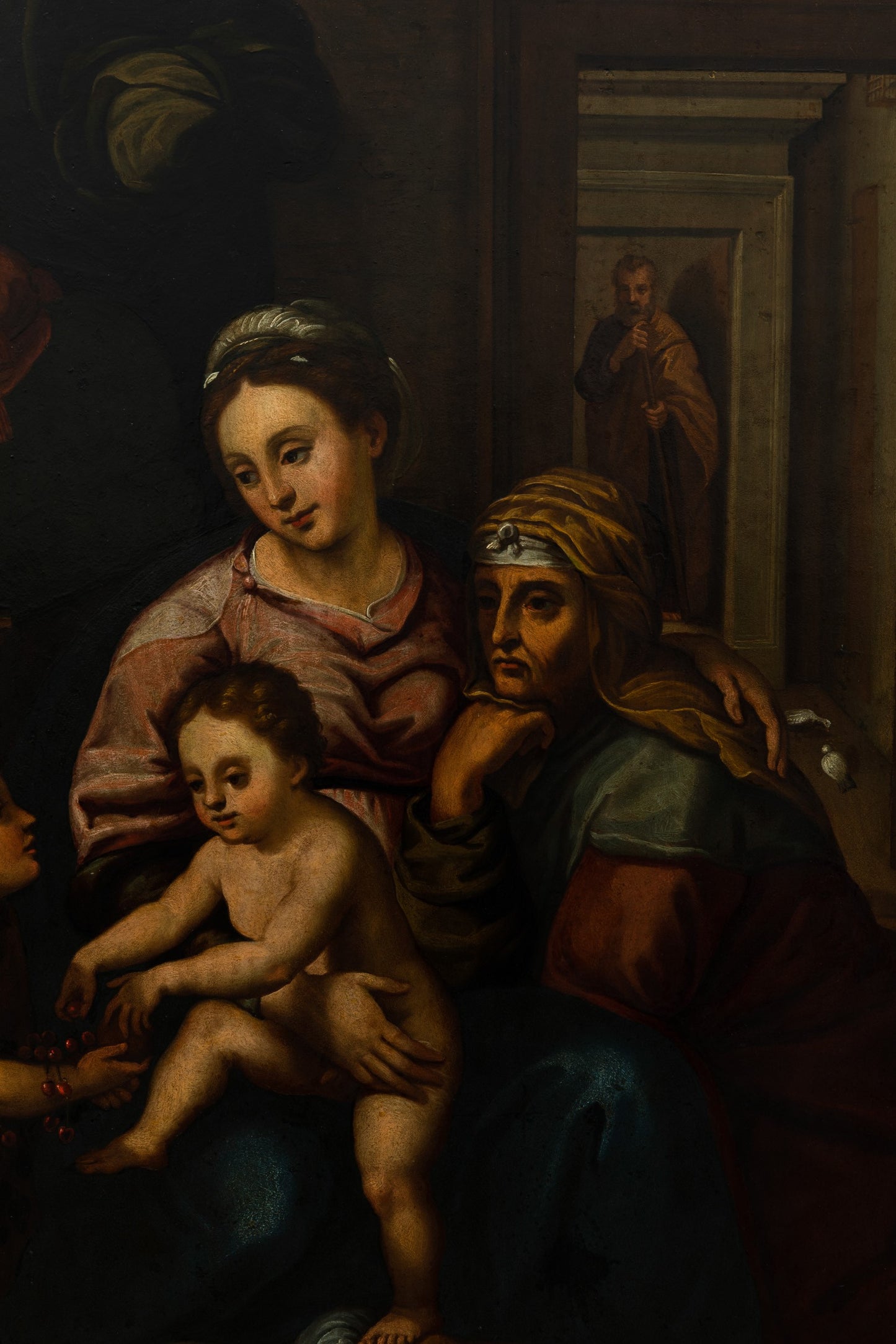
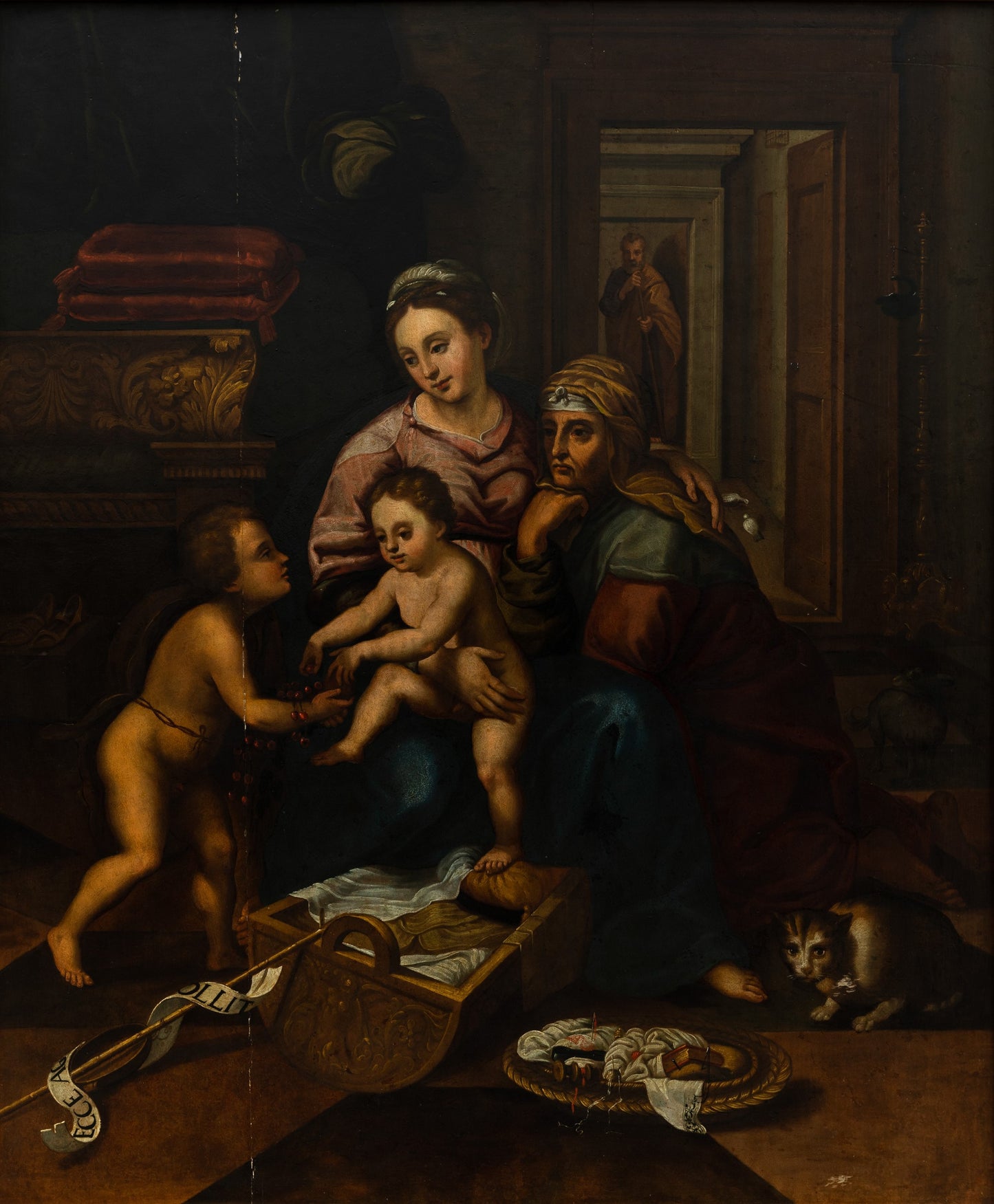
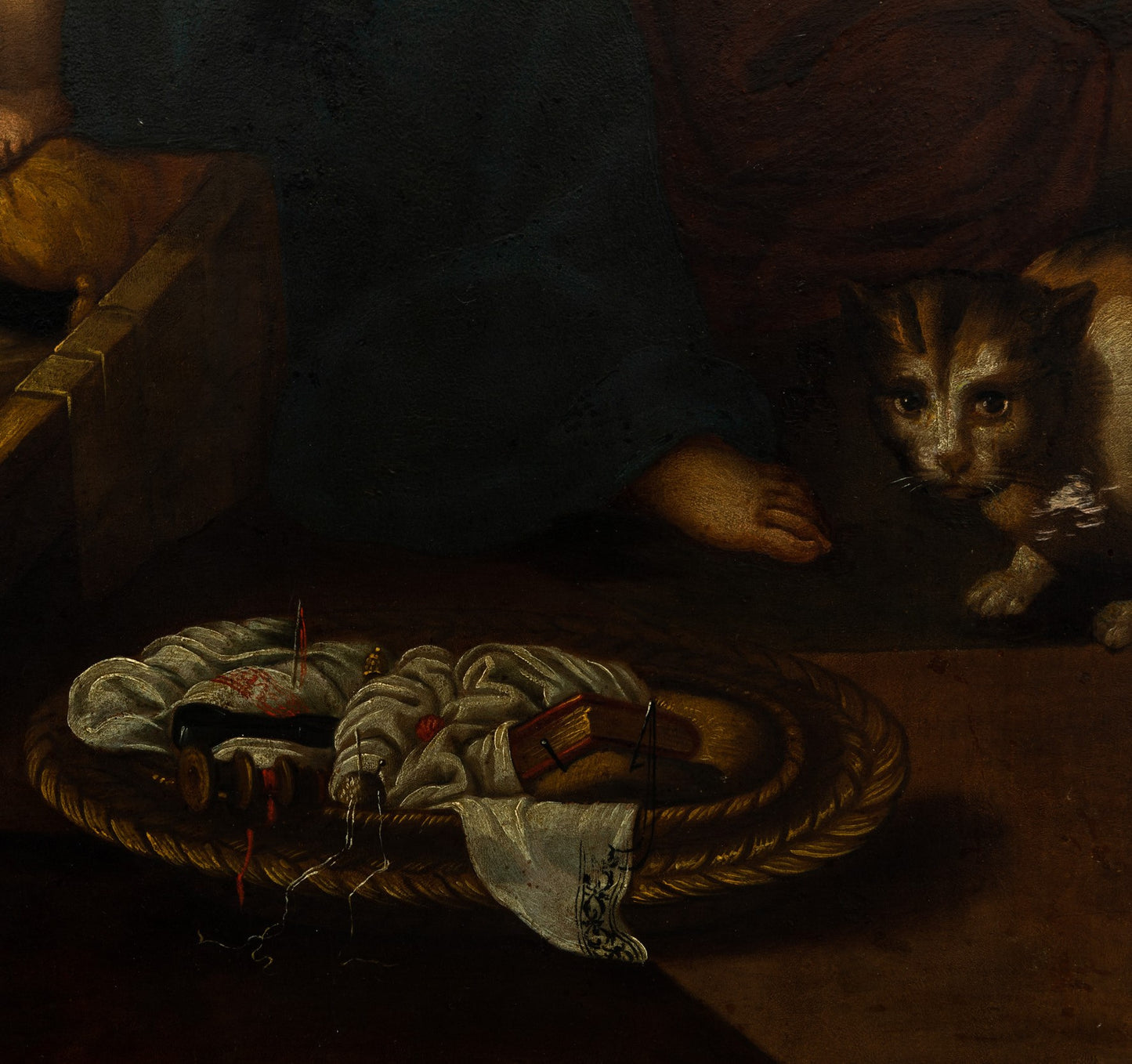
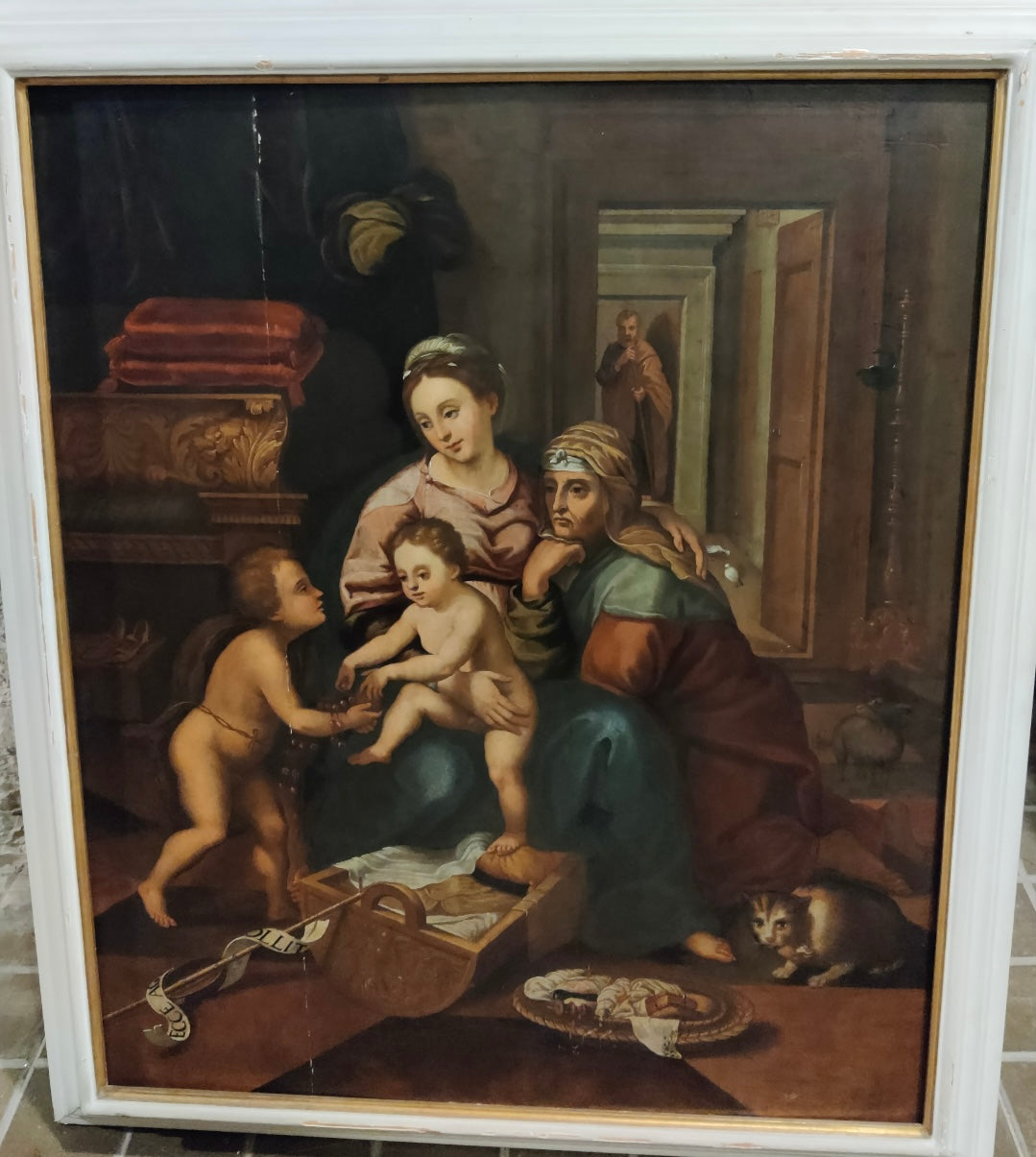
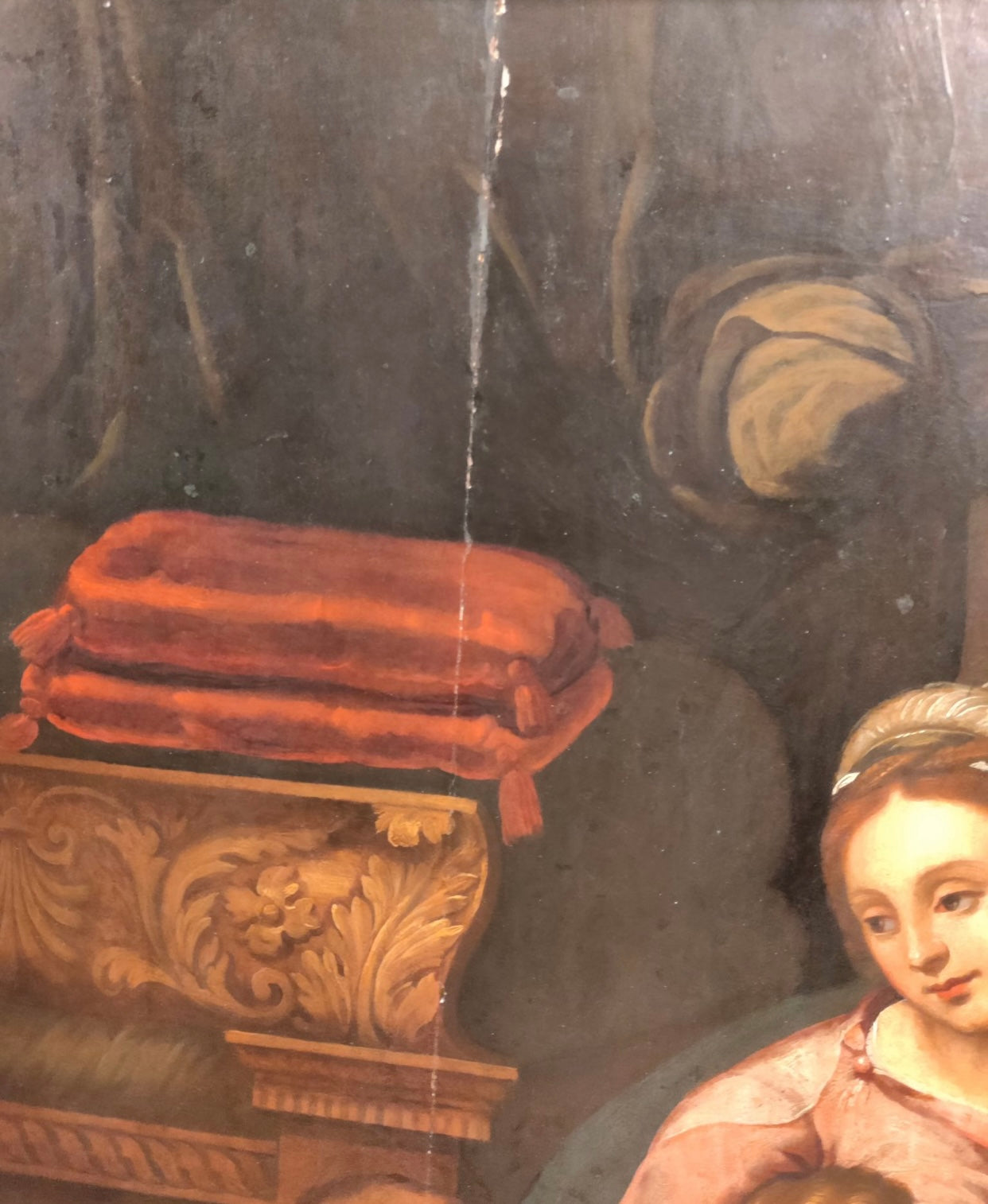
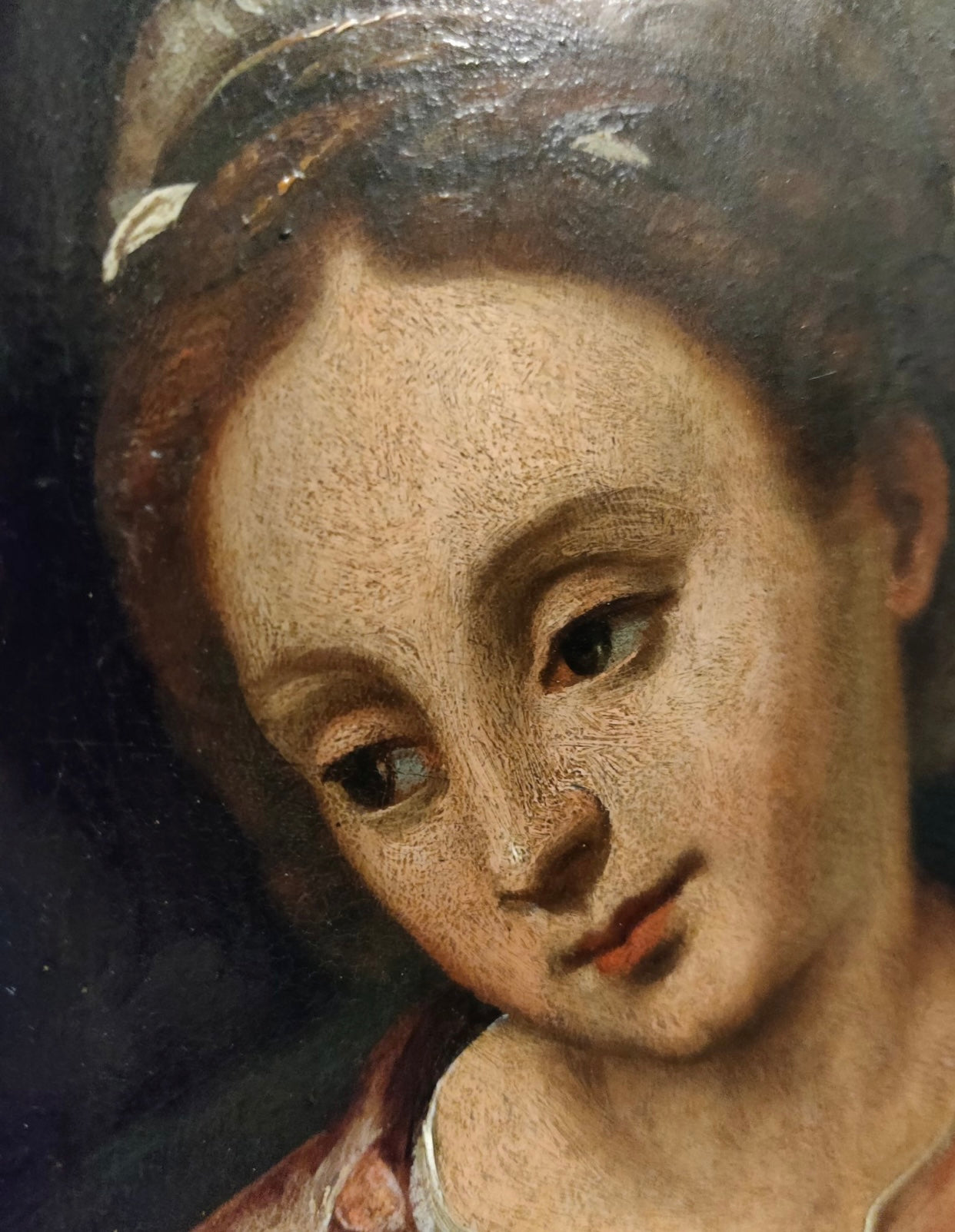
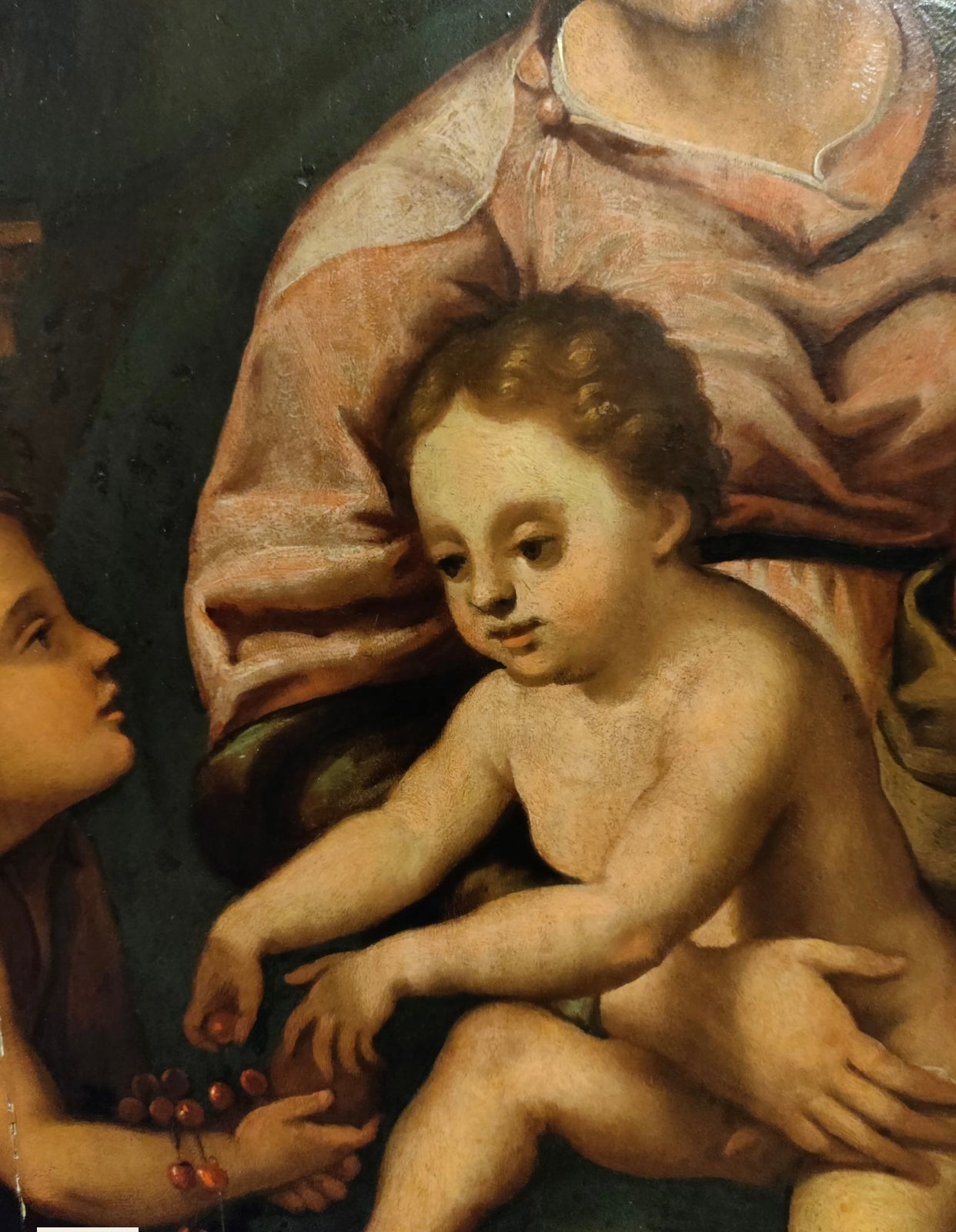
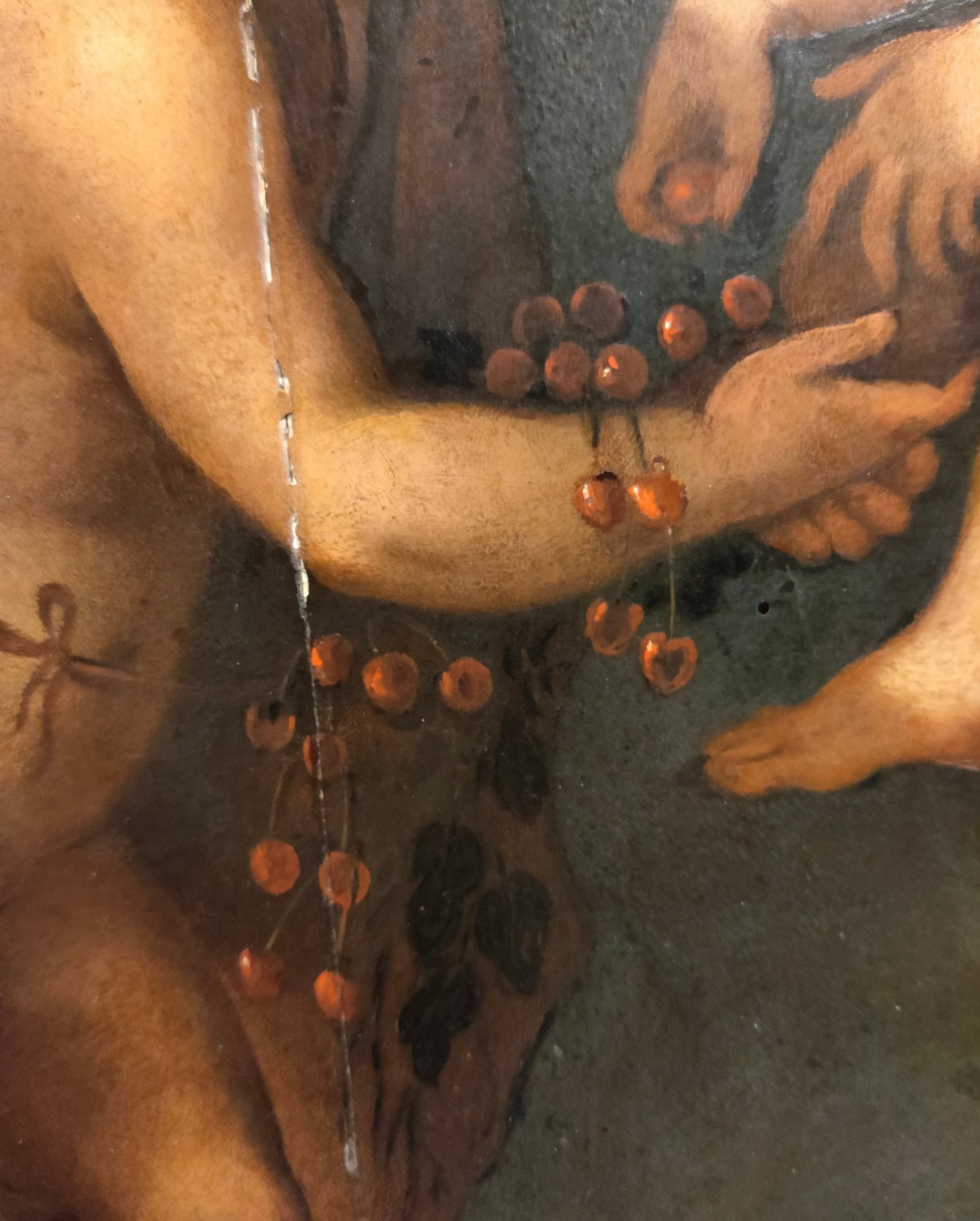
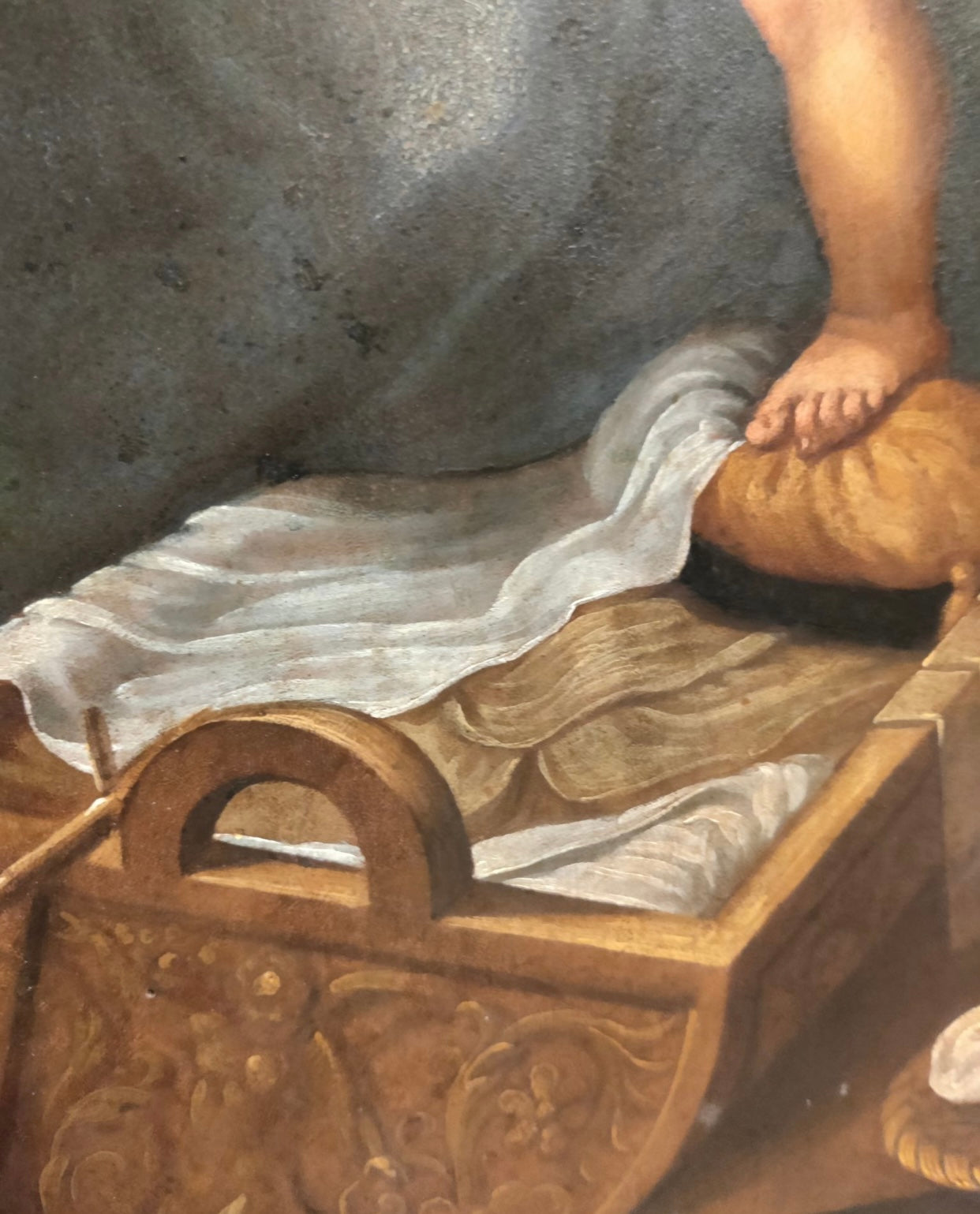
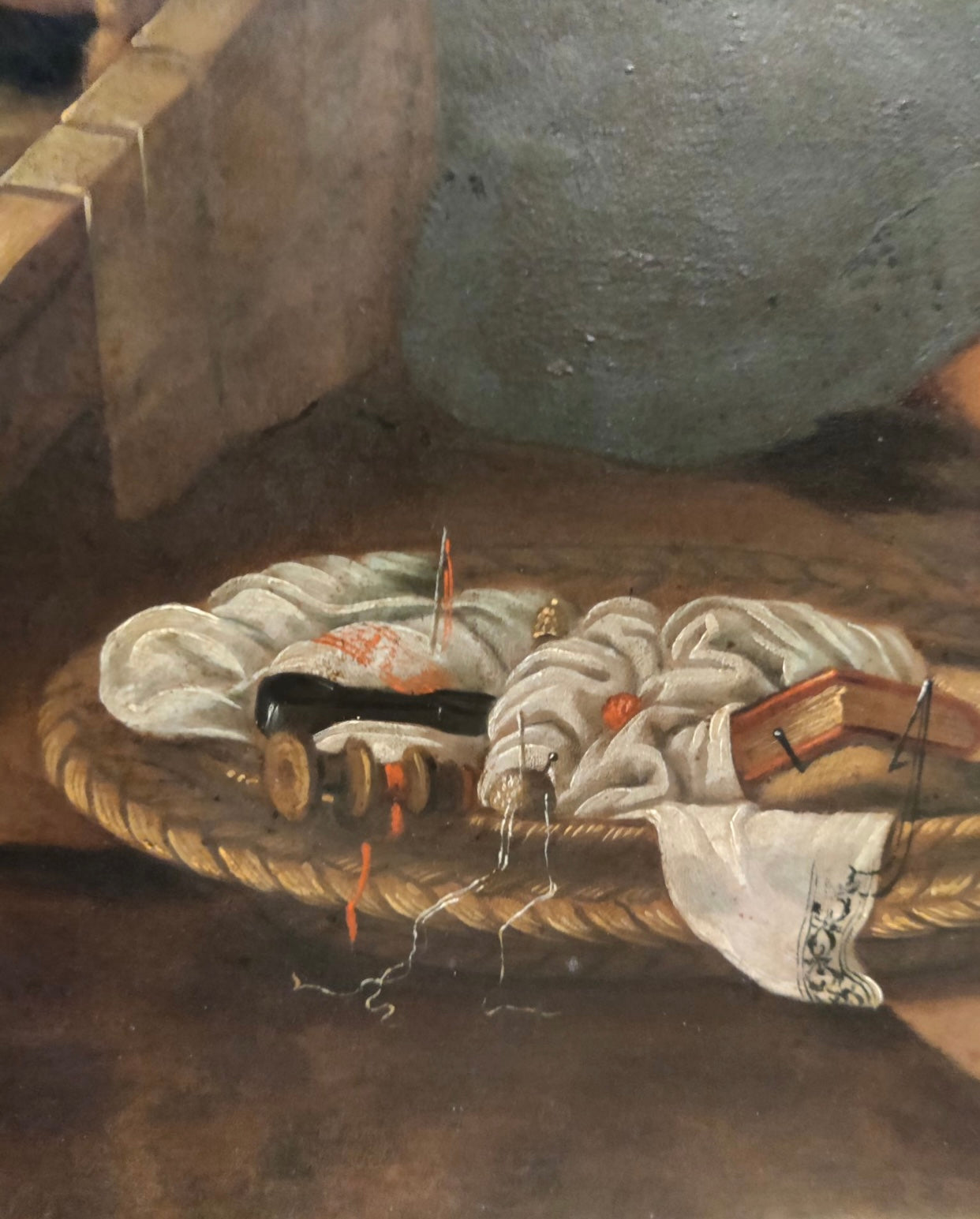
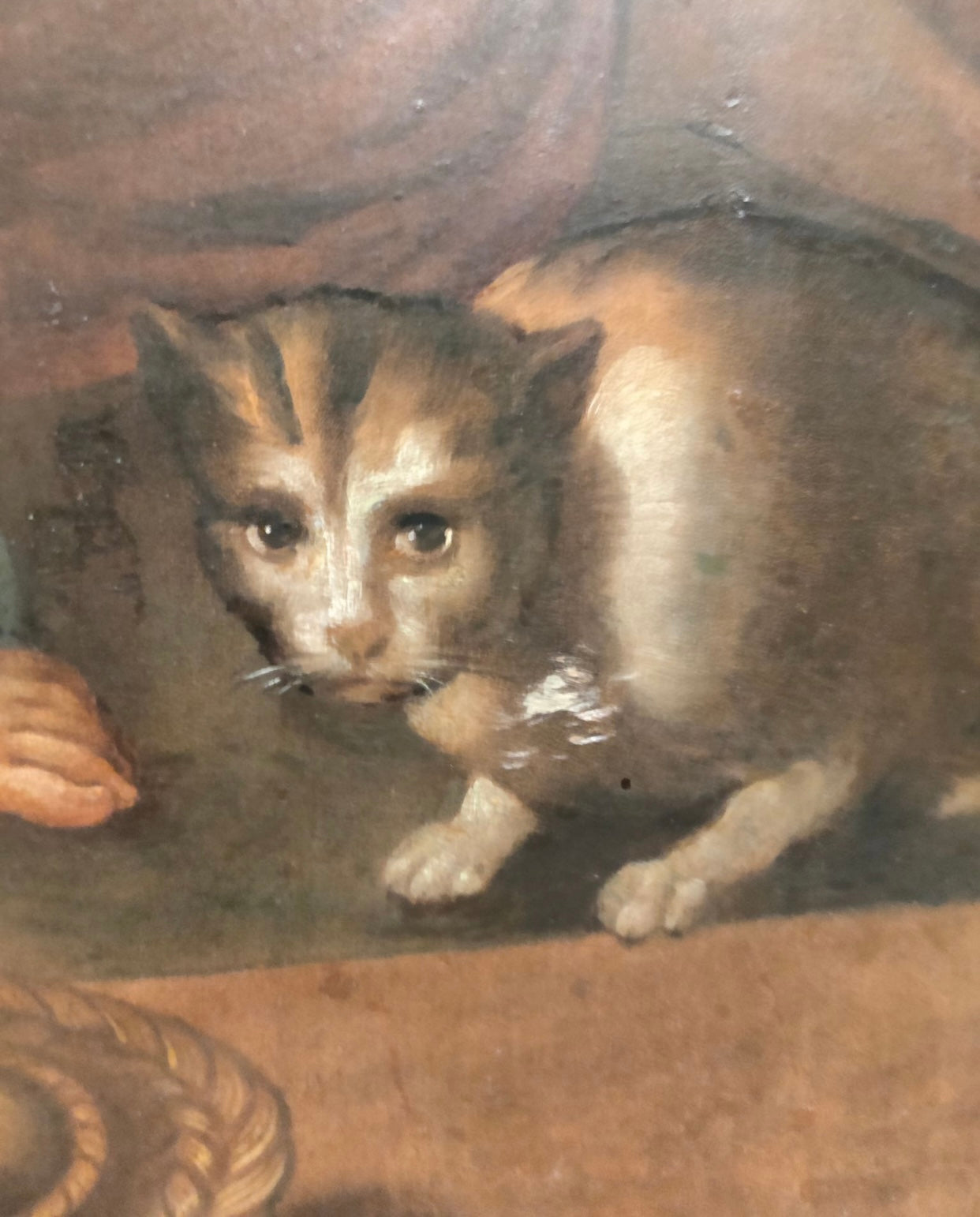
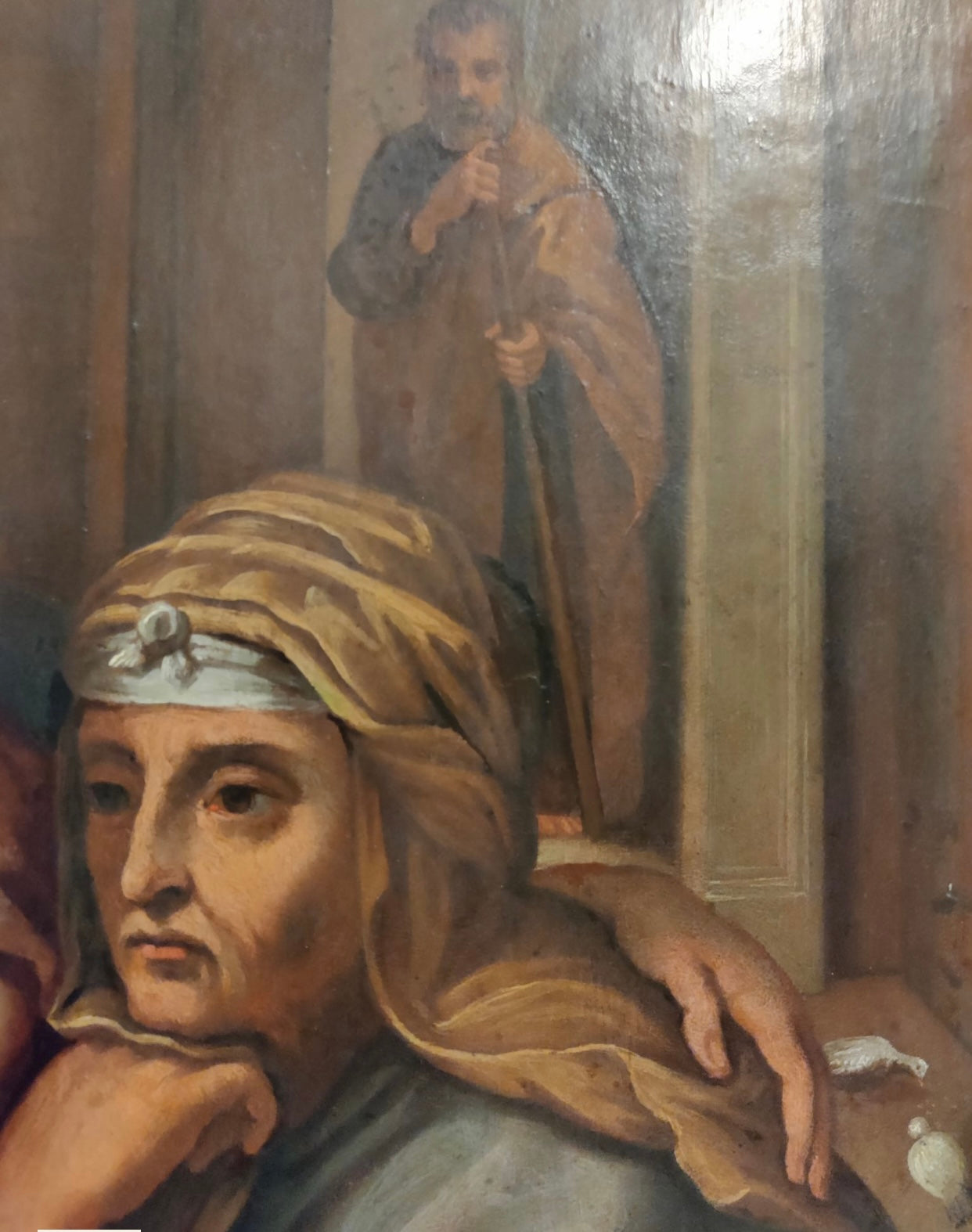
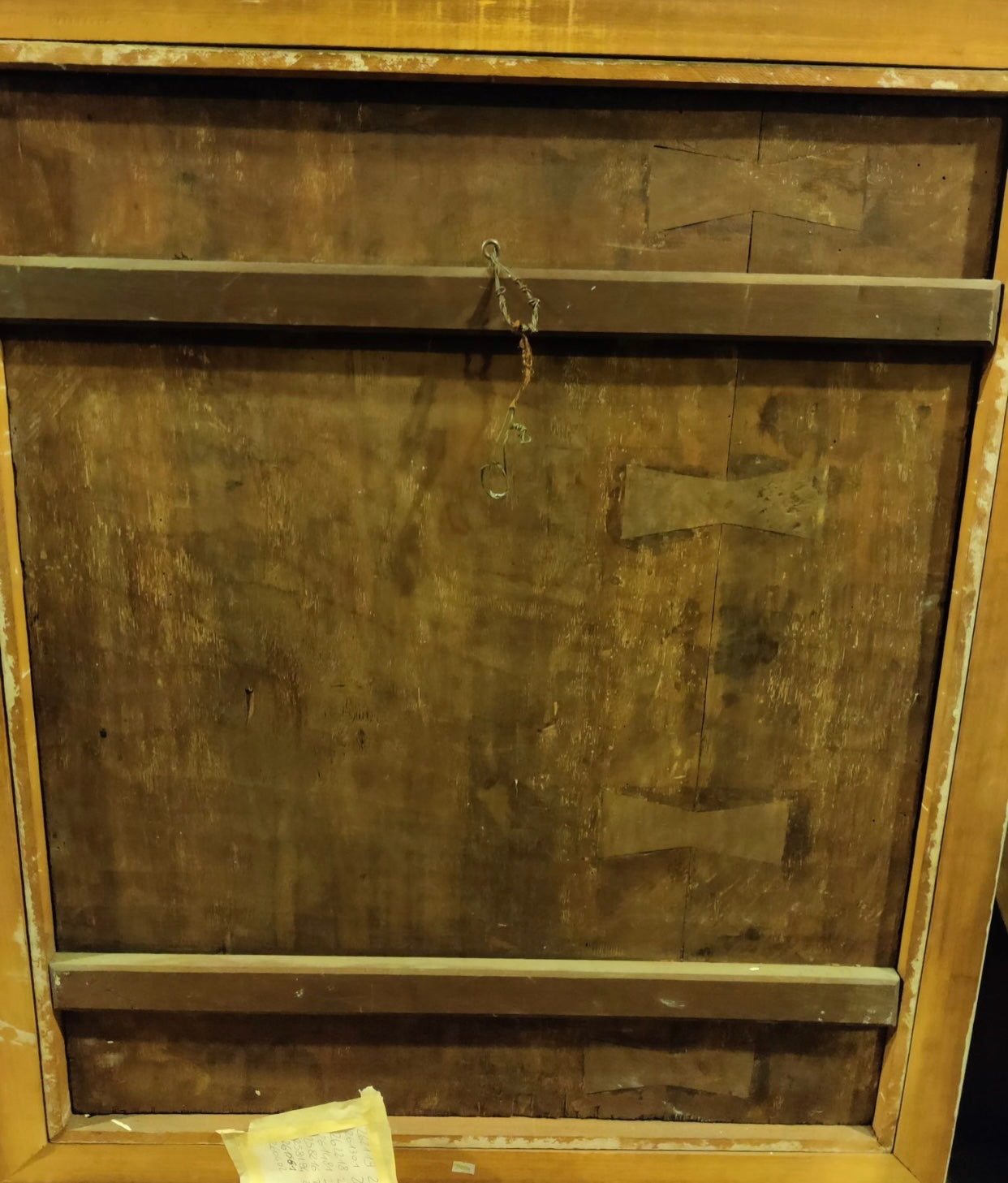
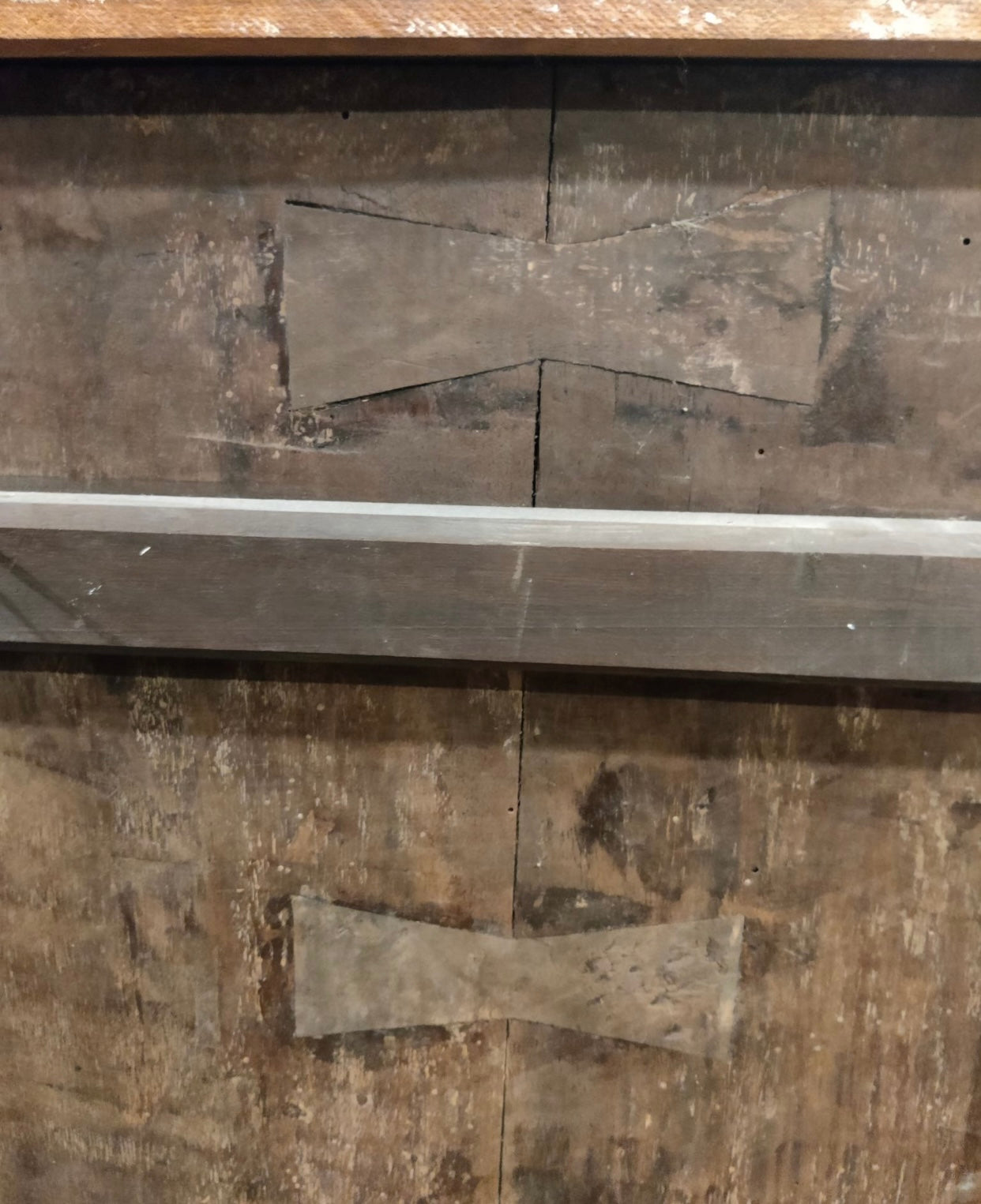
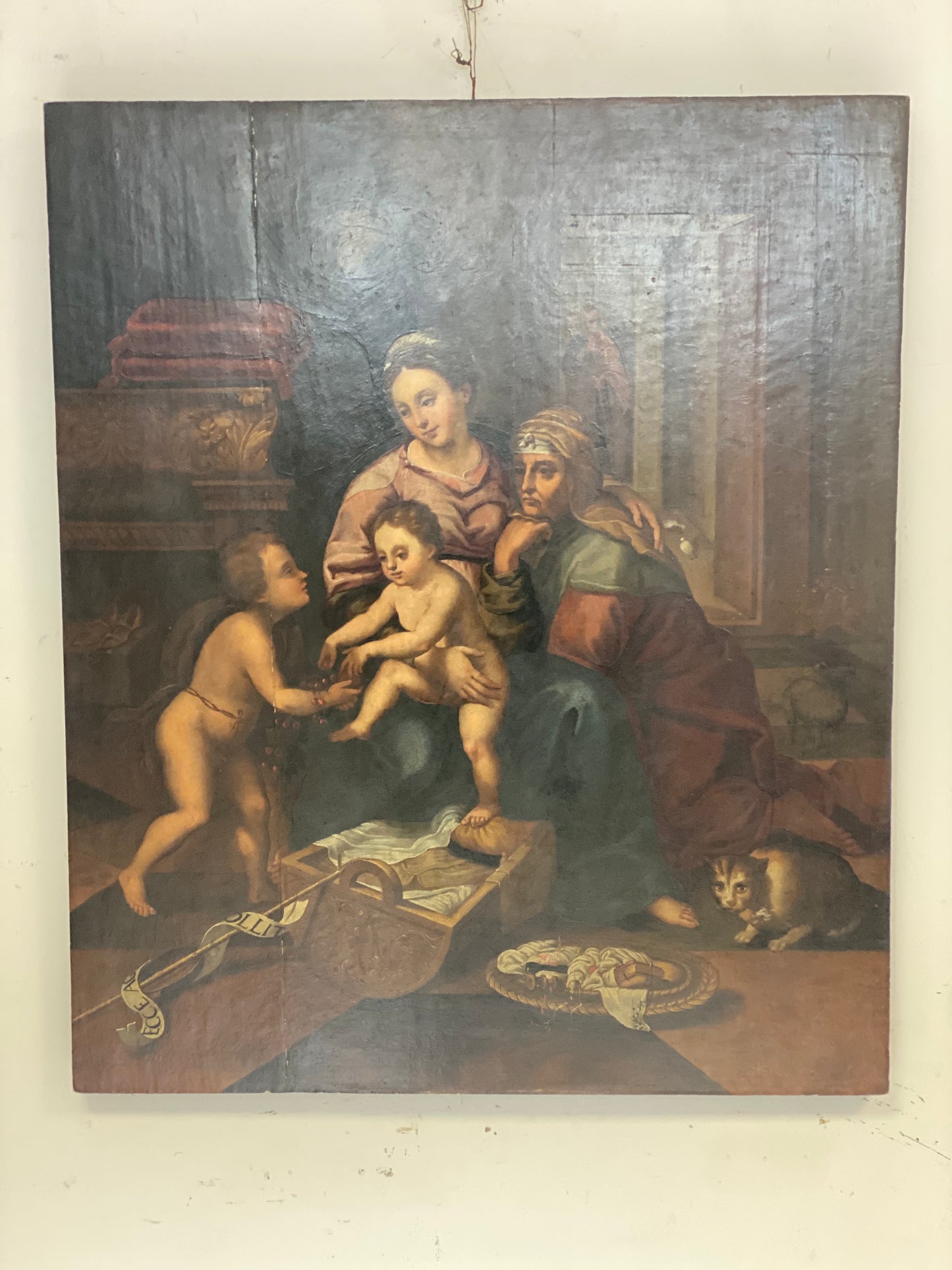
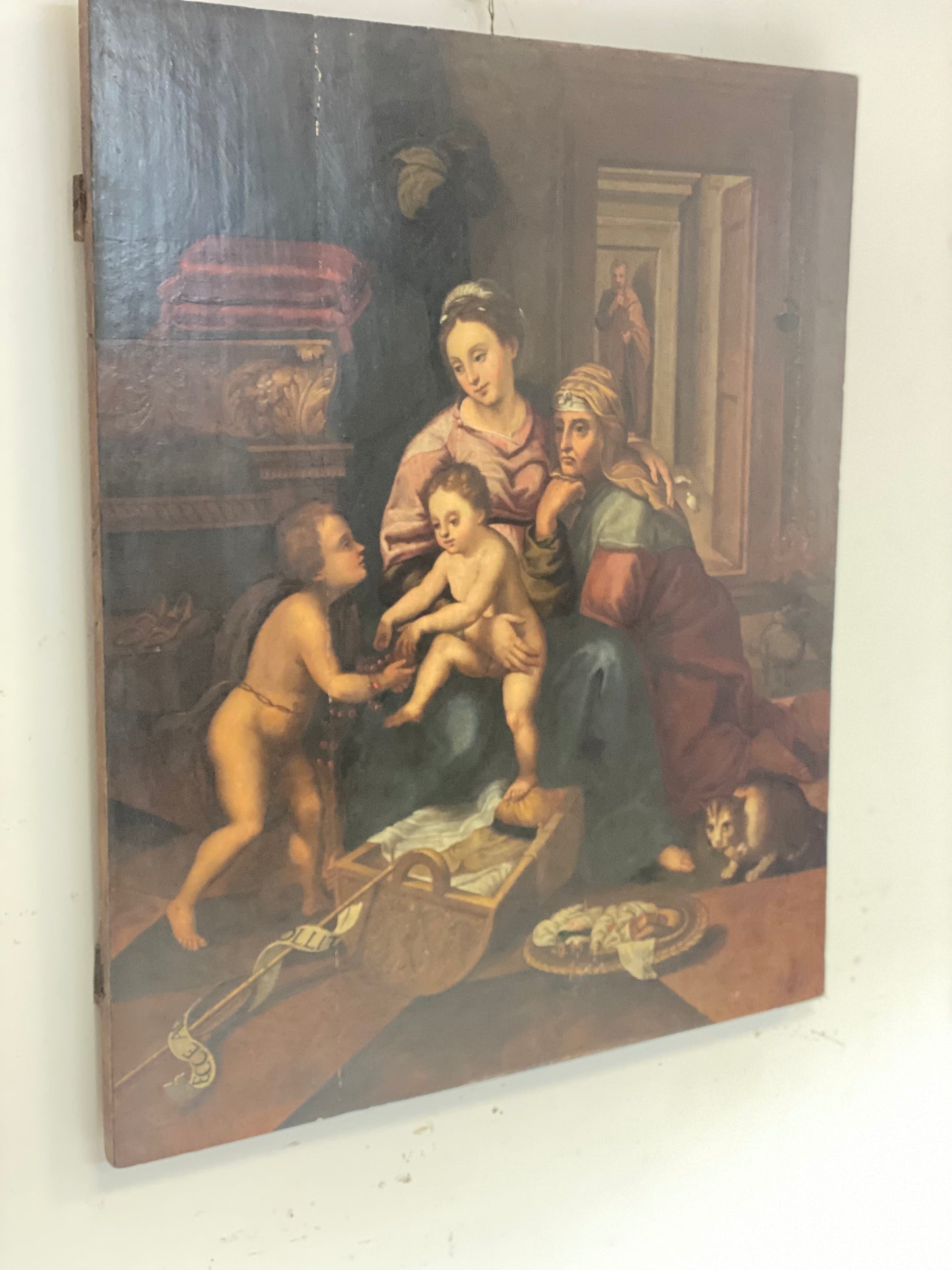
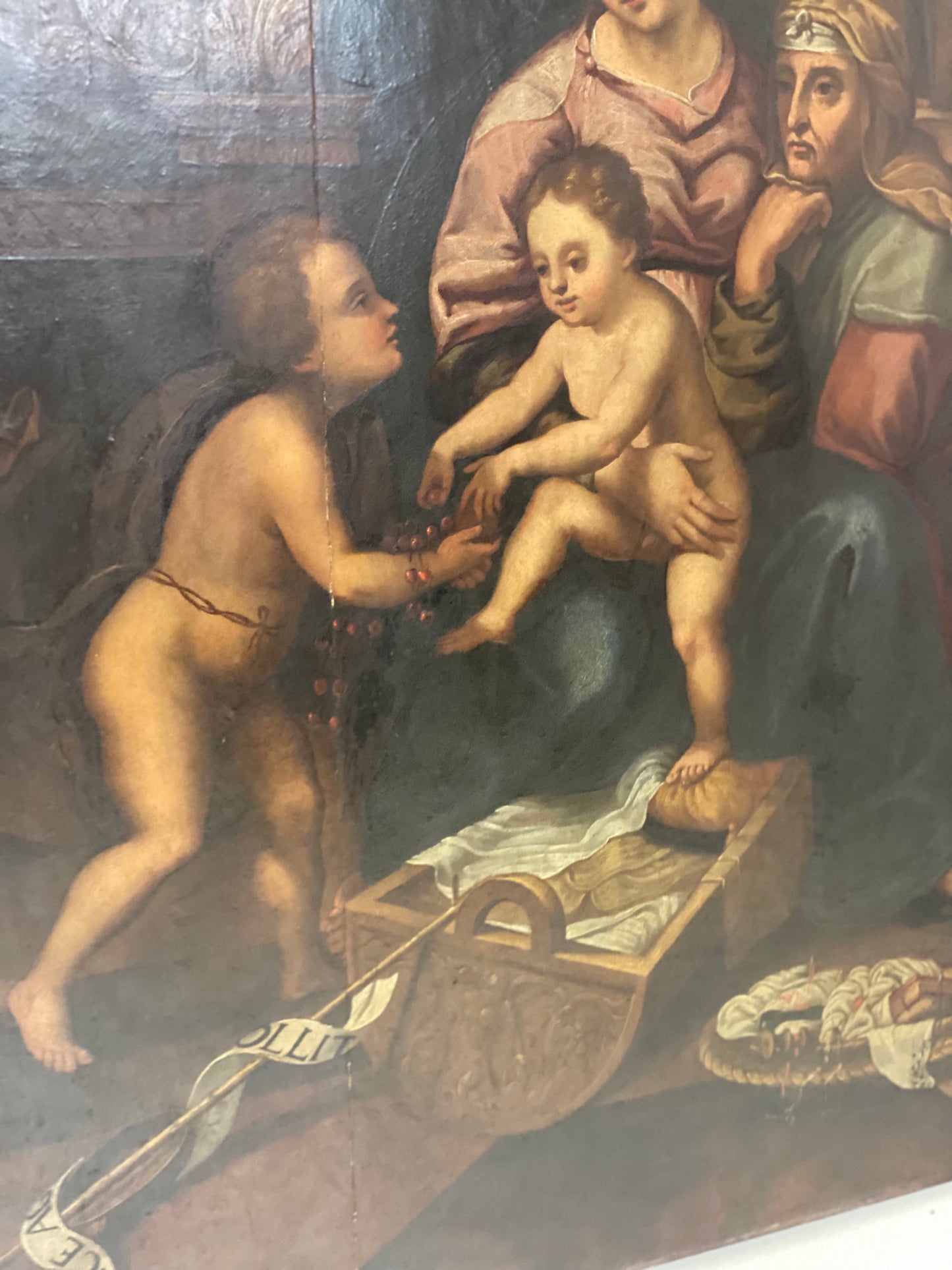
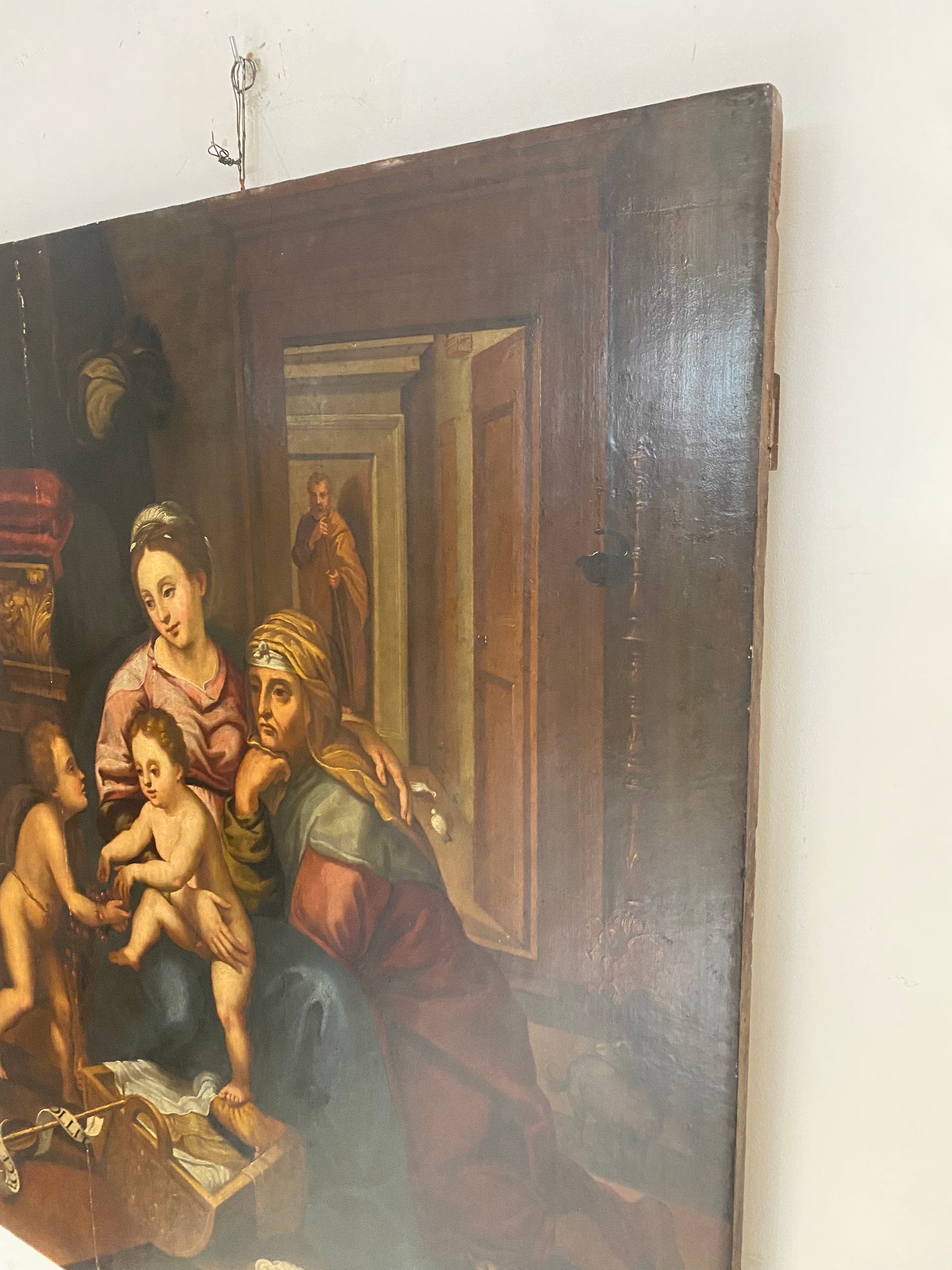
Frequently Asked Questions
Things to know
The items are in their natural state
All our pieces are authentic and retain the signs of time that tell their story. This means that they may present small imperfections, signs of wear or original patina, which for us are an integral part of their charm and uniqueness.
We restore on request
Unless explicitly requested, we leave the signs of time and imperfections intact, to preserve the authenticity and soul of the antique object. However, if you want a restoration intervention, our team of experts is at your disposal to evaluate together the most suitable solution.
We work only and exclusively by appointment
Our service is exclusive and personalized: we receive only by appointment to guarantee you our full attention. Contact us to arrange a meeting and discover our collection in complete tranquility.
How does transportation work?
We offer different transport solutions, depending on the size and delicacy of the item. We rely on specialized professionals to ensure that each piece arrives at its destination in perfect condition. Contact us for more details or to request a personalized quote
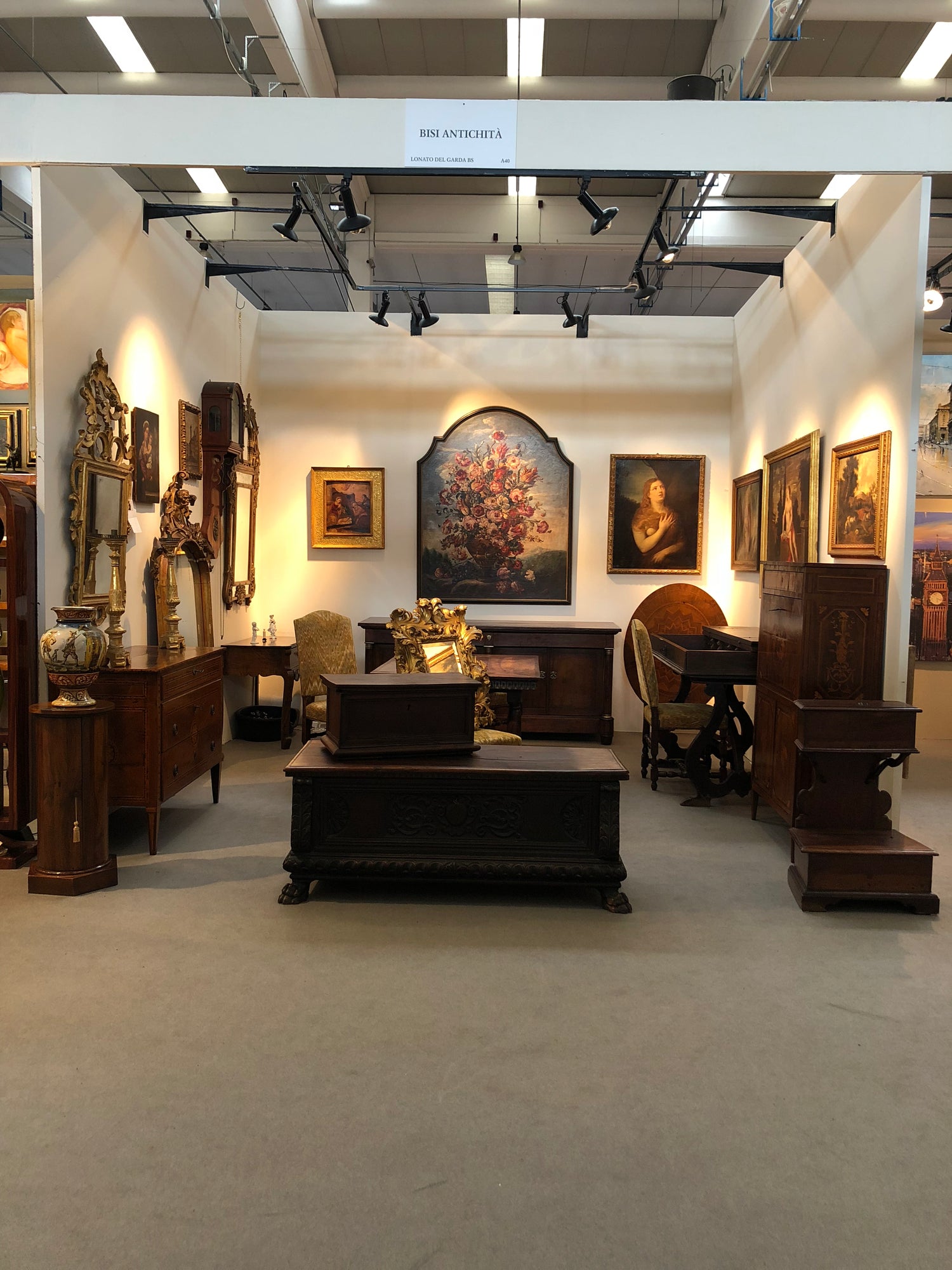
QUALITY AND PASSION FOR GENERATIONS
Since the mid-19th century, our family has been working wood with dedication, transforming a small workshop in Poggio Rusco into a reality rooted on Lake Garda. Since 2014 , we have moved away from the family tradition of furniture production, orienting ourselves towards the restoration and search for ancient treasures to offer to our customers, keeping intact the values of authenticity and quality.


















